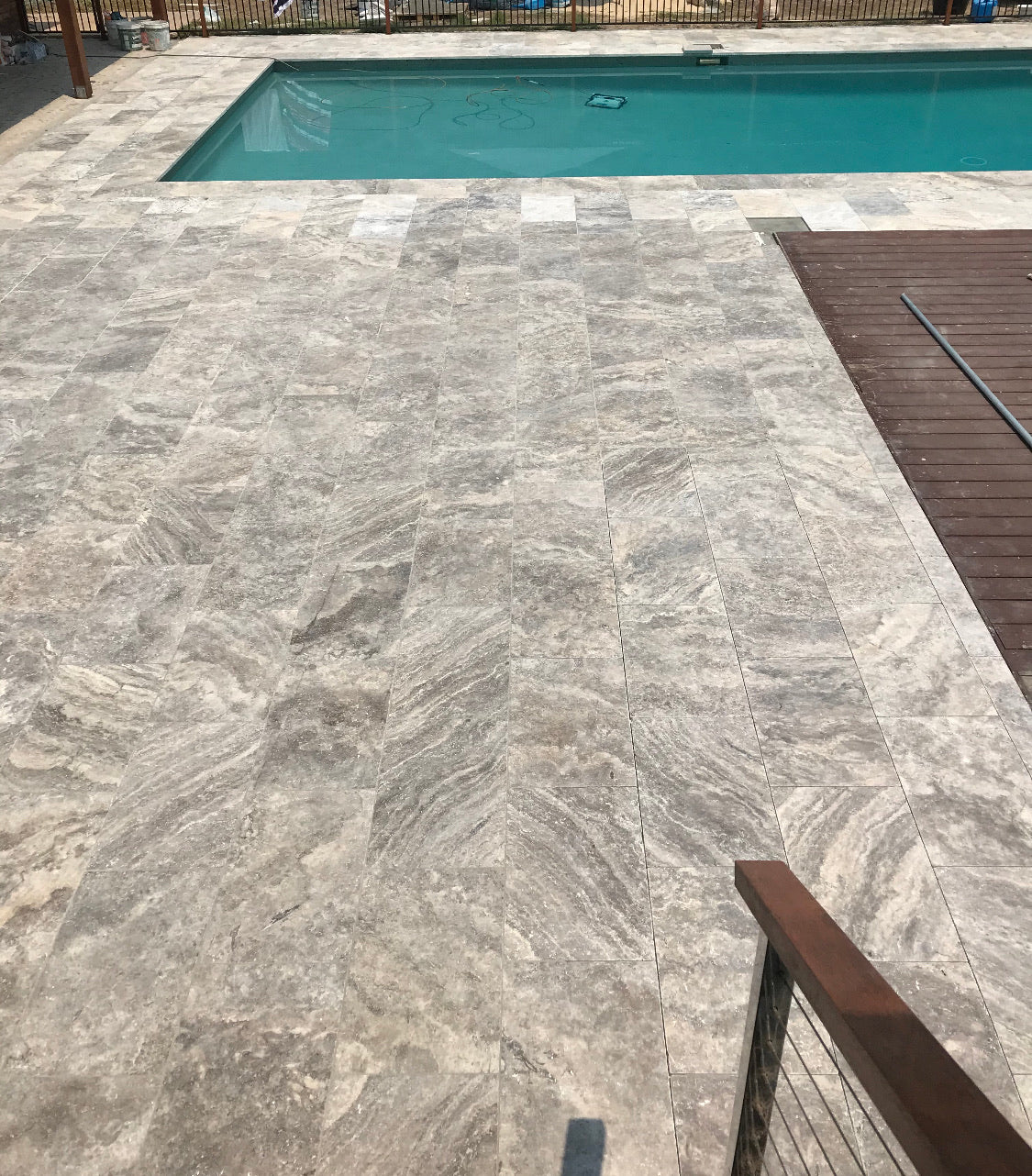Travertine is one of the most popular natural stones for patios, pool decks, and walkways. Its timeless beauty, cool-to-the-touch surface, and unique textures make it a favorite for outdoor spaces. But one question homeowners often ask is: should you fill the natural holes in travertine pavers?
Why Travertine Has Holes
Travertine forms naturally from mineral deposits, which creates its signature porous texture. These small holes and pits give travertine its rustic, earthy look. Some pavers are sold “unfilled” (holes left open), while others come “filled” (holes smoothed with resin or cement).
Pros of Leaving Holes Unfilled
-
Natural Look: Unfilled travertine maintains an authentic, old-world charm.
-
Slip Resistance: The tiny holes create grip, making unfilled travertine less slippery when wet—perfect for pool areas.
-
Breathability: Leaving holes open allows water to drain naturally, reducing the risk of surface damage from trapped moisture.
Cons of Leaving Holes Unfilled
-
Dirt and Debris: The holes can collect dust, leaves, or sand, making maintenance harder.
-
Insects and Weeds: In outdoor settings, small gaps may become spots for ants or tiny weeds to settle.
-
Comfort: Bare feet or patio furniture legs may catch in larger holes, which some homeowners find bothersome.
Benefits of Filling Travertine Holes
-
Smooth Finish: Filling the holes creates a more polished, modern look.
-
Easier Cleaning: With fewer crevices, sweeping and washing become simpler.
-
Durability: Filling helps protect against erosion and reduces the chances of cracks forming from water penetration.
Should You Fill Them?
The choice depends on your design goals and lifestyle needs:
-
If you love a rustic, Mediterranean feel, leave the holes unfilled.
-
If you prefer a sleeker, low-maintenance surface, filling the holes may be the better option.
-
For high-traffic areas (like patios with lots of furniture), filling can prevent damage over time.
Final Recommendation – Should you fill travertine paver holes?
There’s no wrong answer—it comes down to personal preference and function. Many homeowners choose a hybrid approach: filling larger holes while leaving smaller ones natural. No matter your choice, regular sealing is essential to protect travertine from stains, weather, and wear.

